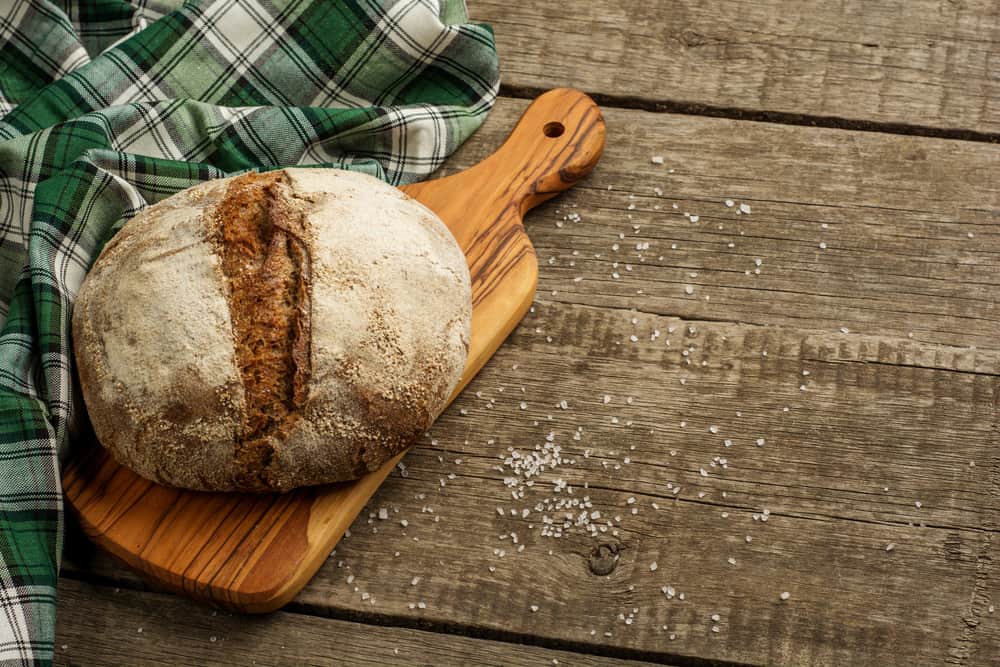Since not everyone values an old piece of wood full of cuts and potentially quite utilized, collecting breadboards could not be very popular.
You might be shocked to learn that there are collectors out there for everything. French breadboards are no different, either.
Although many boards can be found in less than ideal conditions, collectors are not concerned with those specifics. Boards come in diverse shapes and sizes and come in all different designs.
Antique Bread Boards are also inexpensive; many boards can be found for less than $100, while the ancient ones, dating back over 100 years, will cost you around $500. But you can always find better deals at flea markets and antique stores.
They are therefore ideal items if you want to establish a collection but don’t have a lot of money.
Additionally, they are items that can beautifully complement and adorn your dining room or kitchen. Despite what they may appear to be, they have a variety of purposes, and in this post, we’ll show you how to make the most of them. Let’s get going!
Table of Contents
The Bread Boards
No one knows why they named them French breadboards. The name may be because in France bread is an essential element of gastronomy and all houses used to have their oven to make bread.
Wooden boards weren’t just used for cutting food like they are mostly now. They were also used as bread platters to put in the oven, as some bakeries still do that preserve old kitchen utensils.
When placing bread or pizza in hot ovens, a variety of wooden boards, such as those with long handles, come in very handy.
Due to the wooden handle’s extended length, you can keep your distance from the oven and prevent burns or any other accidents.
Slices of the already baked bread are cut and placed on the table using other, smaller boards. These boards are often smaller, around the size of a big plate or platter, and have a slimmer finish to be part of the table setting.
Many kitchen boards include a hole that we use as a handle by inserting our fingers, however, few people are aware that this is an inappropriate technique.
The wooden boards that have a huge opening where our fingers fit were not made so that we could grip the board, but rather so that we could pour finely chopped food directly into the pan through that hole to prevent food from spilling or falling over the sides.
Vintage wooden boards are over 50 years old, while antique wooden boards are those that are over 100 years old and have a significant increase in value.
No matter how old they are, the majority of these objects have experienced the passage of time, and it is extremely uncommon to locate them in good shape, therefore prices will never exceed hundreds of dollars.
Types of Bread Boards
We will now examine the many sorts of wooden boards, their purposes, and their dimensions.
Cooking tables
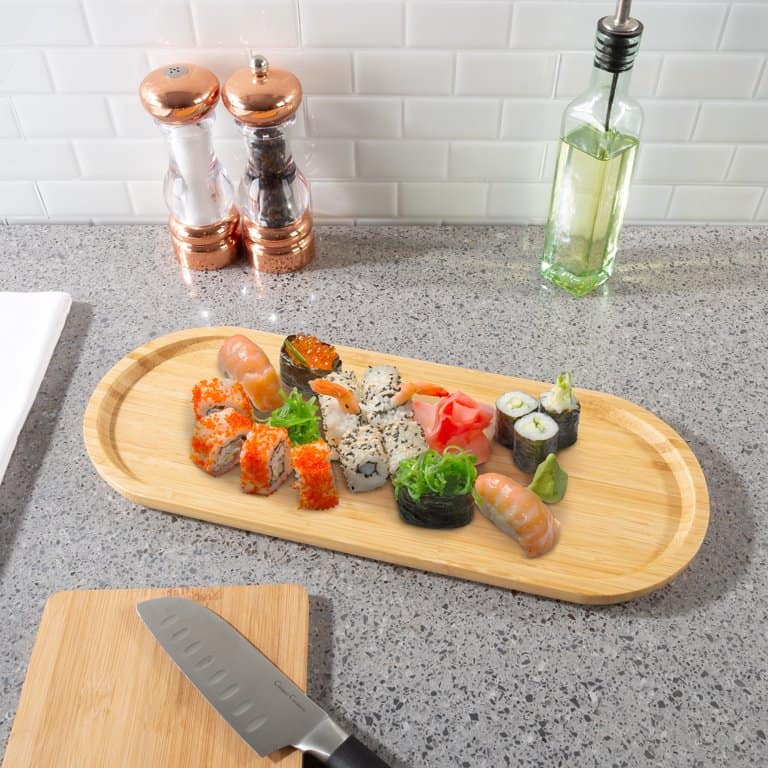
They are the most typical tables that exist in every home. They often have a round or rectangular form and are the same size as a dinner plate.
Some tables are made to hold trays of food that can be served and placed on the table. These tables typically include engraving or decorating.
Food-related knives tend to be simpler, have a handle or handles, and are typically made of beech, maple, oak, olive, or bamboo.
Baguette Tables
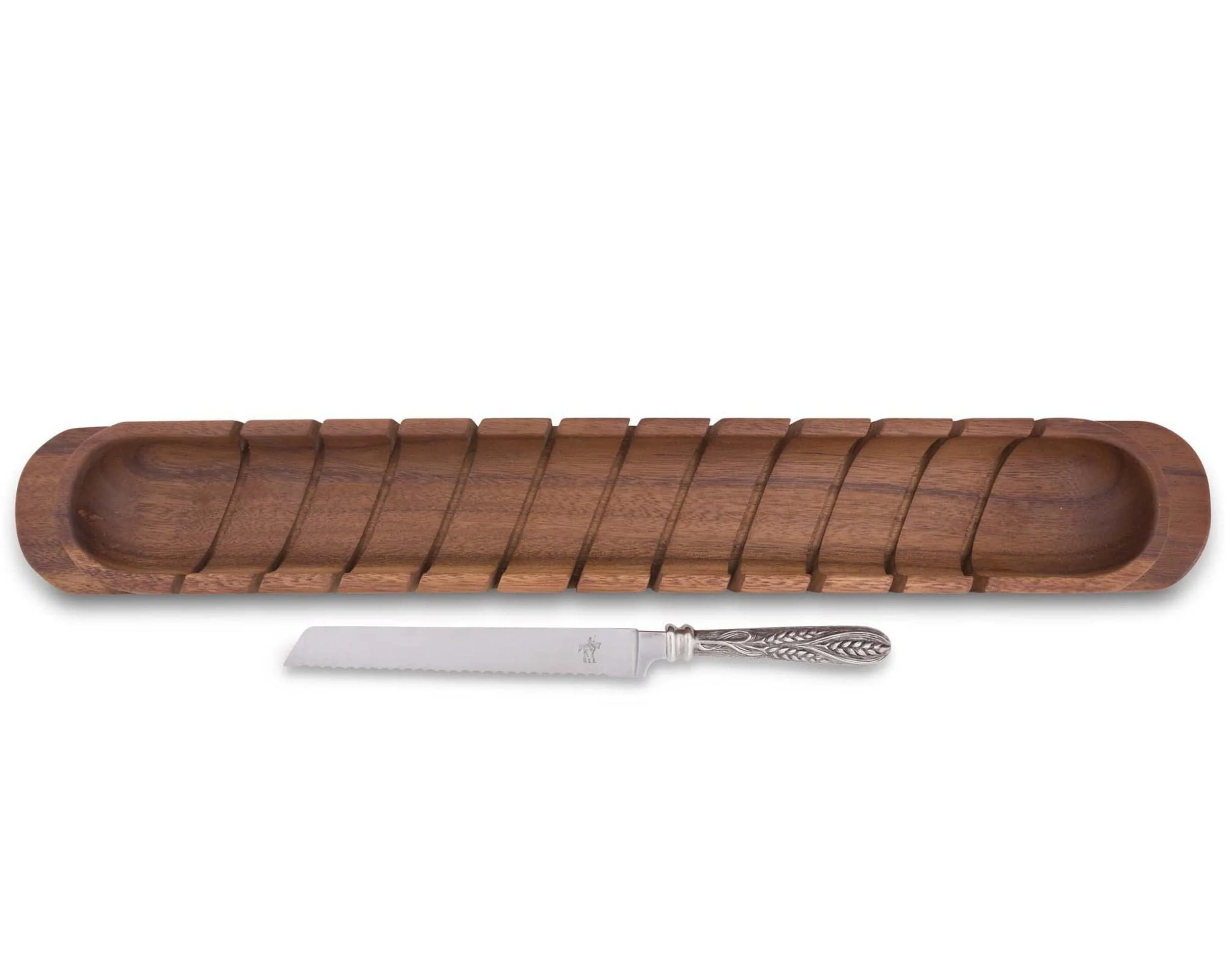
25 inches is the standard length for baguette boards. This board’s design is straightforward, with a groove in the middle to make it easier to cut the baguette and keep it from slipping.
Big Tables
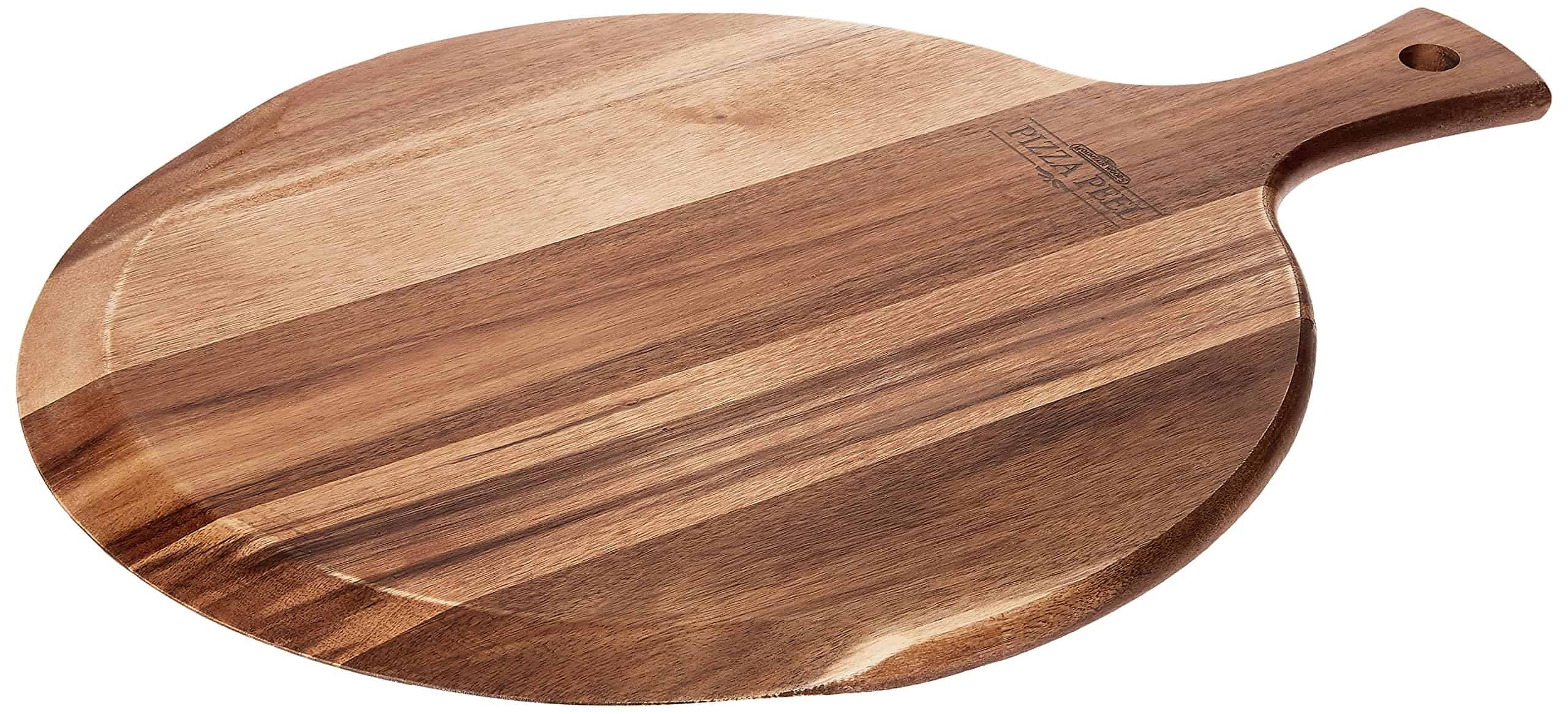
People moved many loaves of bread using these boards from one location to another. Since they are the perfect size to fit a huge pizza, the majority are spherical in shape and range in diameter from 24 to 28 inches.
They are also known as “pizza boards” for this reason, but specialty pizza boards have a long handle that makes moving pizzas into and out of the oven even simpler.
They are frequently used in bakeries and people used pine and walnut to make them.
Bakery Tables
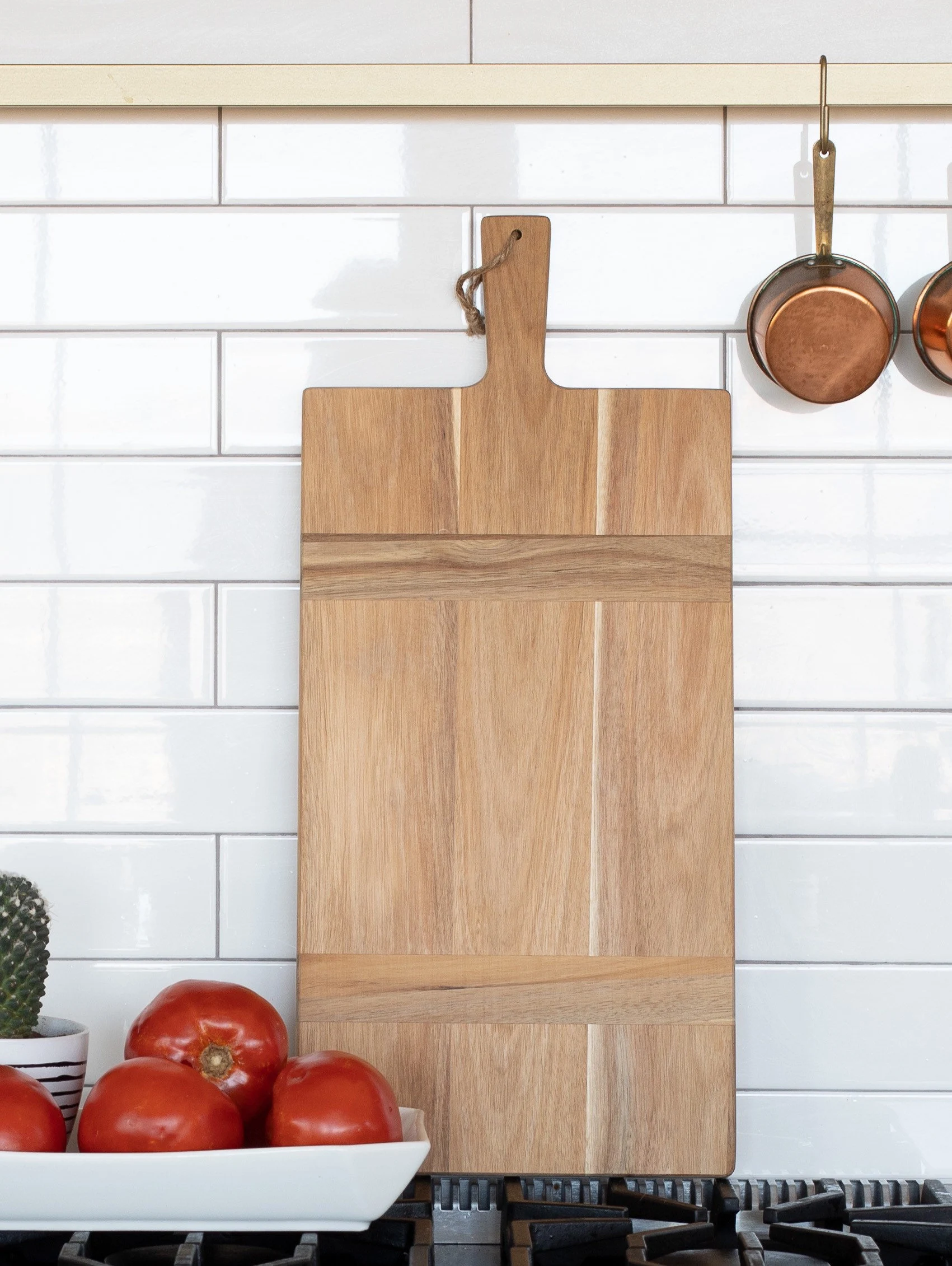
Bakery boards are typically rectangular, 25 to 30 inches long, and relatively thick.
These boards, which are often made of pine, oak, or walnut, include a handle that makes it simple to put the loaves in and out of the oven.
Bread Boards: Materials Used
Maple, Pine, and Walnut were the hardwoods used to make the earliest breadboards. Although they are uncommon, oak-made items are also available.
Due to its flexibility, walnut is still used for the majority of modern breadboards, but it also protects knife edges from fast becoming dull.
Currently, mahogany or bamboo are also utilized. You may now purchase bread boards constructed from multiple kinds of wood at once as long as they are composed of a flexible material thanks to technological advancements and increased awareness of recycling.
How to Recognize a Vintage Breadboard
Since most breadboards weren’t considered works of art and were made by a member of the household or, in the case of businesses, by one of the bakers, dating can be difficult.
In addition, some companies became experts in various kitchen utensils over time. The French company Bérard, for example, specialized in hardwood kitchen boards since 1892.
The company was founded by Marius Bérard, and his sons later carried it on. It’s been manufacturing wooden kitchen utensils for more than 100 years and is known all over the world because of its vintage french breadboards.
Its modern products are marked, but those made a century ago don’t share the same fate.
Therefore, the following standards must be met to recognize a vintage breadboard:
Size matters
At the beginning of the 20th century, smaller breadboards were usually 12 inches, but later they were shrunk to 10 or even 8 inches.
Also, keep in mind that many of these tables were handmade by a family member. The sizes are so inconsistent and variable, but the average is between 10 and 15 inches.
Over time, the tables used in bakeries changed. The old wooden trays were no longer needed as bakers adopted aluminum pans and trays.
The handles on the baking trays made in the 20th century are either smaller or no longer there.
Observe the patina
One way to identify an antique breadboard is to look at the wood. Older boards usually have a softer core and are more worn overall. Also, the edges are eroding and softening.
The fact that they had a daily use and are covered in knife marks or splinters is an indication that they weren’t considered works of art or collectibles.
It’s also quite possible that the hue of the wood evolved to a darker shade over time.
Don’t believe in the authenticity of the breadboard if it appears to be brand new. Some dishonest people deliberately age the wood so they can sell it for more money as if they are antiques.
To recognize a real old breadboard, you need to use all your senses.
In addition to looking at the wood, use your other senses: touch and smell are especially important because they allow you to feel the texture of the wood and sense the smell of the board.
Different smells mix on old boards, and it’s not easy to get rid of them. So pay close attention and keep your senses alert.
Check the type of wood.
The most typical woods used to make antique breadboards are sycamore, beech, oak, hickory, and fruitwood.
Although bamboo is very popular and useful, it’s a much more modern material.
If you want to buy an antique table, you need to make sure that it’s made of one of the materials mentioned at the beginning.
Avoid buying boards with knots, because they’re made of low-quality wood from the outside of the tree. Also, it’s possible that the board will stretch over time and the knots will be warped.
The Carving
Most boards from the Victorian era are carved in some way. Look for patterns of flowers, fruit, or a word related to food.
Some boards also have the maker’s monogram on them.
Over time, designs became less complex and more common. This is a result of the experience of mass production during the Industrial Revolution. The patterns from this period are simple; they may be decorated with a simple flower, an ear of corn, or a relatively unobtrusive heraldic design.
Tables with slogan
Words are written on the wood of some old tables from victorian times. This is because they were intended as gifts to guests or as mementos for a particular occasion.
These breadboards are extremely hard to find but are highly prized by collectors. Many of them contain mottos, prayers, or proverbs related to the bread, while others bear the name of the person they honor or a saying from the business of their client.
What’s the value of a breadboard?
The parameters for determining the price of an antique are usually the same for all antiques but differ for breadboards.
Wooden breadboards from the 19th century or earlier sell very well and can cost anywhere from $100 to $600 depending on their age
Yet, the condition of an antique is another determining factor. The value of a piece increases the better shape it’s in, although this rule doesn’t apply to wooden boards.
They’re among the few items that all accept scratches, wormholes, cracks, and other aging effects of time.
The fact that a board belonged to a savage butcher or that it has more stripes than a zebra is irrelevant to collectors of these items.
The cost varies depending on the type of breadboard you want to buy. That is why we provide you with a price list of the different boards you can get online on sites like eBay or Etsy.
- HEAVY Antique French Butcher Block Countertop Table Cutting Board, French Farmhouse Farmhouse Decor — $605.59
- Antique Bread Kneading Board, Bread Kneading Bowl, Bread Kneading Trough, Wooden Dough Board, Primitive Kitchen Utensil, Farmhouse Kitchen — $427.22
- Vintage Large Green Rectangle Bread Board, Cheese Bread Board, Rectangular Bread Board, French Charcuterie Board, Wood Cheese Board — $395.00
- Vintage Cutting Board / Wooden Cutting Board / Old Cutting Board / Retro Kitchen Decor — $301.50
- Antique Primitive Cutting Board, Rustic Bread Board, Old Wood Decorative Butcher Block, Serving Tray, Vintage Cutting Board — $109.01
- Elder Bread Board French Antique Fruit Serving Board Beautiful Patina Hand Carved Wooden Dish Black Forest Plate Polished Style — $93.59
Cleaning Advice for the Vintage Bread Board
Even though these breadboards seem to be in poor condition and don’t need to be cared for, it’s a good idea to take a few steps to preserve them so that their value doesn’t decrease due to poor care.
- If you plan to use them in your kitchen, we advise you to always wash them immediately after use. It’s not necessary to use a sophisticated cleaner, water and soap are enough.
For those old boards, we recommend that you always use hot water and simply run it over the stained surface.
- If you soak these boards in water, they can deform in a short time by the moisture of the wood.
- It’s also not recommended to put them in the dishwasher. Remember that they aren’t the same as modern plastic boards, which you can easily wash in the dishwasher.
- Take care of the wood regularly. It’s recommended that you put oil on the wood once a month or every two months and let it soak in overnight.
You can also use a mixture of mineral oil and beeswax if you want to do it with more natural products.
- We recommend that you don’t use just one wood. It’s recommended to use 5 ideally. Or at least two breadboards, one for sweet and one for salty foods.
- You’ve to remember to clean or change the board every time you use it to cut meat and then you want to cut another food, like vegetables or nuts.
Remember that in addition to crossing flavors, bacteria can remain if you’re used to using only one board for everything.
We hope that this article has served as a basic introductory guide to the world of old breadboards. Collecting them is a rare but interesting hobby and many vintage specimens are available on the market.
